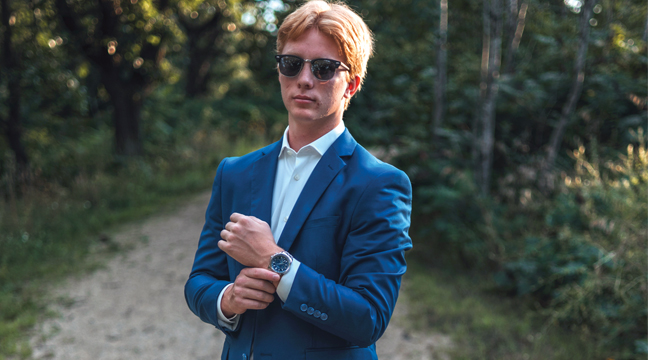Nearly 70 people gathered at the Lake Maria State Park nature center Sunday to learn how to identify and collect Minnesota’s wild mushrooms.
Ron Spinosa, Minnesota Mycological Society member and mushroom expert, led the program. The Mycological Society studies poisonous and edible mushrooms and teaches identification skills so people can safely pick and eat the mushrooms they find.
“Mushrooms are absolutely fascinating,” said Spinosa. “You use nearly all your senses to identify them. You need to look at color, shape, smell, taste and texture.”
He began the program with a PowerPoint presentation featuring mushroom biology and photos of common mushrooms.
Spinosa told the crowd mushrooms are part of the fungi kingdom and are related to animals in that they are “heterotrophic,” meaning they have to eat. Like animals, they also use oxygen and give off carbon dioxide.
He explained 90% of plants need fungi near their roots in order to grow healthy, and said fungi are the great recyclers of nature; without them we’d be miles deep in debris.
Mushrooms themselves are actually reproductive organs, and what grows above ground is only a small part of their extensive underground system. Spinosa likened picking a mushroom to picking an apple off a tree.
Worldwide there are an estimated 50,000 mushroom species and more are constantly being discovered. Minnesota is home to 1,200 documented species of mushrooms, although it’s estimated there are actually close to 5,000.
2,000 species are edible, with only 100 of those considered good edibles. Minnesota is home to 15 to 30 of the commonly eaten varieties.
When picking mushrooms, Spinosa warned the audience to never eat one unless it has been positively identified. There are a number of different resources to help with this, including the book Mushrooms of the Upper Midwest, which Spinosa was an advisor on.
Learning to identify toxic mushrooms is extremely important for mushroom hunters. Worldwide there are 400 species that are poisonous, although few are actually lethal.
Minnesota has two deadly mushrooms, the Destroying Angel, which is pure white with a smooth, silky cap and skirt-like ring near the top of the stem found near oak trees, and the Deadly Galerina, which is small, rust-colored, and found on decaying wood.
Another toxic mushroom found in the area is the Jack O’ Lantern, a large, bright orange species that grows on decaying wood. It gets its name not only from the color, but also for the fact that it can produce a greenish glow in total darkness.
For beginning mushroom hunters, Spinosa recommends the “foolproof four,” which includes Morels, Giant Puffballs, Chicken of the Woods, and Shaggy Mane. Some hunters include two more, the Oyster Mushroom and Hen of the Woods.
The official state mushroom, Morels are the most sought after mushroom in Minnesota. Their pitted caps that appear honeycombed or sponge-like easily identify them. They have hollow interiors and are typically found around trees that have recently died, especially elms.
Another favorite of Minnesota mushroom hunters is Chicken of the Woods. Orange on the top and yellow underneath, it grows in groupings of thick, stemless fan-shaped caps.
Hen of the Woods has become highly prized not only for its flavor, but also for its medicinal uses. During Sunday’s presentation a group came by the nature center with baskets filled with a number of the mushrooms, having just found them on a hunting expedition.
After his PowerPoint presentation, Spinosa took participants on a hike through the woods around the nature center to hunt for wild mushrooms, talking about each type found and explaining how to identify them.
He advised the group the best way to collect mushrooms is with a basket or paper grocery bag, plastic can cause them to spoil. Collecting mushrooms in Minnesota state parks is legal if done for personal use.
To learn more about the Minnesota Mycological Society, visit their website at minnesotamycologicalsociety.org.










